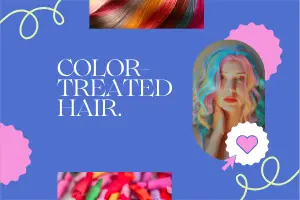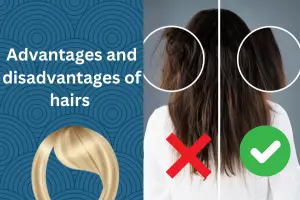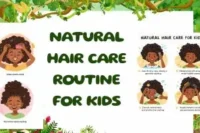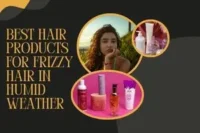Textured Hair – Learning, Caring, and Accepting It We all have them.
Published: 23 Oct 2024
Textured hair encompasses wavy, curly, and coily hair types. It is beautiful in its own right, rich with diversity, and flaunted by many. But unlike straight hair, textured hair needs more attention in terms of care and maintenance, strength, definition, and overall health. Like assurance of moisture retention or the pain of choosing the right hair products, taking care of textured hair can sometimes be rewarding, but also hard. But fear not, this complete guide comprehensively addresses the various categories of textured hair, how to care for the hair, and most importantly, how to accept and embrace a certain hair type or pattern. If you want to enhance the natural structure of your curls, control frizz, or simply prevent your textured hair from further damage, this guide will give you all the necessary knowledge and the right tools to achieve that and ensure your hair looks and feels healthy.
What is Textured Hair?
Hair that isn’t straight is often referred to as textured hair, including hair that is slightly to highly curled. Because of the unique curl patterns and volume, it’s classified into three types. Textured hair, however, is usually drier than straight hair—highlighting the importance of mastering straight hair care as a foundation to understand the differences and tailor routines accordingly.
Wavy Hair (Type 2)
This particular hair type has a very soft, S-shaped wave, which is thicker than straight hair. Among the various types of hair, wavy hair tends to be frizzier and often requires special care to maintain its shape and smoothness.
Curly Hair (Type 3)
If this is the case, curly hair will form more trendy spiral curls, but they might be loose ringlets or tight corkscrews. Because it curls, soft hair often requires more moisture and frizzes in humid weather.
Coily Hair (Type 4)
Coily hair usually has the highest density and is the most coiled type of hair available. Such hair consists of thin coils as well as zigzag patterns, and because of its weakness, more care and moisture are required.
There are also specific ways of experiencing each texture. However, the ideal care regimen begins with understanding which hair type you possess. Regardless of the type you have,
Textured hair provides an array of styling options, but such an approach does come with its challenges in terms of preserving its texture and overall beauty.
How to maintain and manage Textured Hair
When dealing with textured hair, it is important to follow a steady regimen that includes hydration, protection, and proper handling to maintain the health and definition of the curls, waves, or coils. Different hair forms are characterized only by straight hair as the only straight form of hair, while other forms are classified as textured and have a tendency to be coarse hair types. A step-by-step guide on how to take care of textured hair properly:
1. Hydrate, Rehydrate, and Then Hydrate Some More
Most coarse/tight textured hair is relatively drier than the straight counterpart in that it requires more time than usual for the natural oils to reach the end of the hair shaft. To better defend the hair from further damage, it is important to use water-filled products. Preferably, the use of conditioners and shampoos that do not contain sulfates.
2. Apply a Leave-In Conditioner
The step here is to apply leave-in conditioners after washing one’s hair to replenish moisture and not let one’s curls become unfavorably dry and therefore difficult to maintain, smooth, or curly.
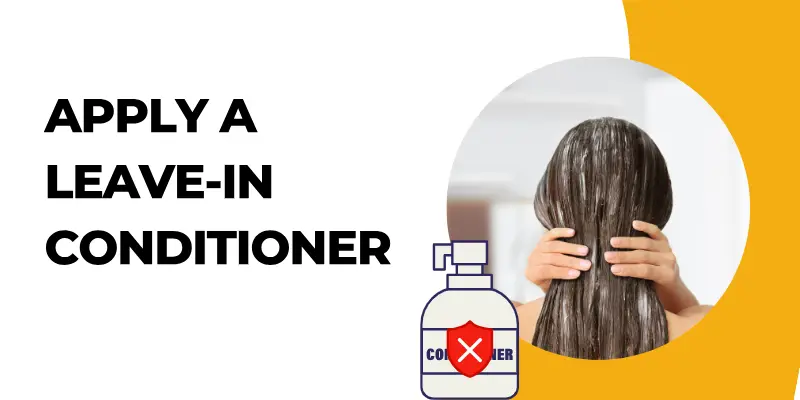
Leave-in conditioners will help in the reduction of frizz, assist in enabling easy detangling with a slip, and ensure that the hair is hydrated all day. This is especially important for textured hair, which tends to dry up fast.
3. Detangle Gently, Detangling made easy,
Well, for most women, that is not the case. If you have textured hair, curly hair, or coily hair, it’s not shocking that the tresses are often tangled up. Coily Hair Care involves gentle detangling techniques—combing should be done when the hair is wet and filled with either conditioner or leave-in products. It allows the user to avoid breakage. Knots always find a way to frustrate curly-haired women. Tangles don’t just magically go away; they require the right tools to get past them, including wide-tooth combs or fingers.
4. Deep Condition
Regularly, to avoid any chances of hair drying, deep conditioners have to be used at least every week. Deep conditioners especially target the hair shaft, thus being able to deliver moisture, repair damage, and restore glossiness. If one needs to achieve the best results, leave the deep conditioning treatment for twenty to thirty minutes. This should be done with one wearing a shower cap or staying close to a source of heat.
5. Refrain from using heat styling tools
Heat can be catastrophic, especially for textured hair, which has a low thickness tolerance. Air drying your hair or using a blow-dryer with a diffuser on low settings is advisable when possible. Hot heating tools should be avoided when hot, except for when you are using heat protectant spray.
6. Use a silk or satin pillowcase
Using cotton pillowcases when you sleep can rub against the cuticles of the hair, leading to frizz or even hair breakage. People with textured hair should sleep on satin or silk pillowcases or silk and wrap their heads to protect them. This reduces the rubbing action on the hair and thus maintains moisture and curls even when someone is sleeping.
7. Use braids, twists, or buns
Protective hairstyles reduce daily wear and tear on the ends of your hair, like braids, twists, or buns. These styles allow women’s hair to avoid split ends, able to keep moisture for a longer time. Extreme tight styles should be avoided because the excessive tension can cause the hairline to sustain damage over time.
Tips for Textured Hair Care
Textured hair thrives with moisture-rich products, gentle handling, and protective styling. Using wide-tooth Hair Brushes helps minimize breakage and maintain curl definition.
1. Hydrating Hair Mask
When it comes to dry hair, deep conditioning masks packed with hydrating ingredients are a game-changer. Protein hair masks not only restore lost moisture but also permeate the hair shaft for added strength and elasticity. These masks are especially beneficial for coarse hair types as they soften the strands and make them more manageable.
2. Natural Hair Oil
Oils are a very useful tool for maintaining beautiful, undamaged locks. Styling tools and environmental conditions can cause significant hair damage, so incorporating oils into your regimen can help.
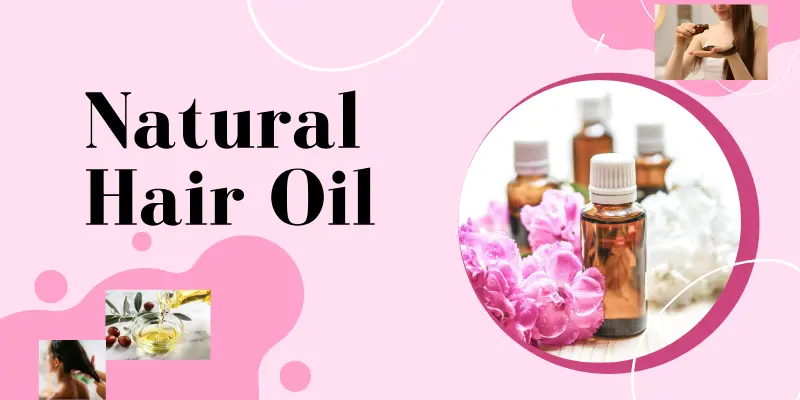
Apply oil to towel-dried hair in moderation to seal in moisture, or add a few drops between washes to keep your hair looking fresh. Natural oils like argan or coconut are ideal as they do not contain harmful chemicals and do not weigh down the hair. One of the key argan oil benefits is its ability to deeply nourish and add shine without greasiness, making it perfect for maintaining healthy-looking hair.
3. Leave-In conditioner
Regular conditioners are wonderful, but everyone should have a leave-in conditioner for every singular purpose: conditioning and moisturization. A leave-in conditioner penetrates the hair shaft, providing nourishment and moisture to the hair structure.
Leave-in conditioners have proven to be a worthwhile product for textured hair. They are applied after one has washed their hair and act as an aid to moisture, frizz control, and tangle management. For those with wavy, curly, and Coily hair, a leave-in conditioner is helpful to maintain texture throughout the day and prevent frizz.
4. Curl-defining cream or Gel
Curl-defining creams and gels serve the purpose of empowering the specific curl pattern found in textured hair and bringing definition to the tresses. Creams work best when hydration level is the priority, whereas gels provide a stronger hold. Depending on your needs and hair profile, you may end up using one or both. Lightweight curl cream works well for wavy or loose curls, but for more defined curls or coils, a gel may work better.
5. Hair Oils and Serums
These serums and oils are designed specifically to lock moisture and shine into the textured hair. For instance, light oils like argan and jojoba oil are effective for controlling frizz and moisture retention because they do not weigh down hair. You can even create a DIY hair serum using these light oils to tailor hydration to your specific hair needs. For coarser textures that require serious moisture and protection, thick oils such as castor oil or shea butter are ideal.
6. Deep Conditioning Mask
In terms of deep hydration and moisturization, a once-a-week deep conditioning treatment must be adopted, particularly for people with textured hair. They work well because they repair almost any damage that has been inflicted on the hair from active styling, the external environment, or even chemical treatments. Deep conditioners with ingredients such as keratin, honey, or almond oil go beyond the surface of the hair and provide nourishment and strength to the hair from within.
7. Heat Protectant Spray
If you are someone who uses heat styling tools, then you must use a heat protectant spray as a bottom line. It creates a protective wrap around the hair shaft, which helps avoid any damage that high temperatures can cause. This is important in textured hair as they are reported to have a greater heat damage potential. I recommend choosing heat protectants that contain added conditioning benefits since they help to keep the hair healthy and shiny even after styling.
Textured Hair Styling Tips
Textured hair has a variety of styling options, but proper techniques and products are needed to maintain a healthy style definition. This applies whether you are amplifying an existing texture or seeking an entirely new structure as follows. These are some key points regarding the styling of textured hair:
1. Avoid Using Heat to Style Textured Hair
Any type of woman with textured hair will find a wash-and-go to be one of the simplest styles, as it involves minimal styling and is intended to show off the natural curl of the hair. Here, the steps involve washing and conditioning, followed by a leave-in conditioner, then curl cream or gel onto damp hair. Then the hair should be scrunched to enhance curls and, in the end, diffuse the hair or let it air dry.
2. For Improved Curl Definition, use twist-outs and braids.
There is also help through the use of twist-outs and braid-outs, which help grow textured hair in both length and curls, as they are specifically designed to tighten curls so that the hair looks stylish. A simple step involves twisting the hair or braiding it when wet and drying it until set, at which point you can unravel it. Proper twisting or braiding will also result in a beautiful curl lasting many days. For great results, works like curl cream or styling butter can be applied to the hair before wrapping it, before braiding or twisting to augment moisture and hold.
3. Use a Diffuser for Volume
A diffuser is extremely useful if you are blow-drying textured hair. A diffuser evenly distributes heat while enhancing the natural curl and minimizing frizz. Do not use it at high heat, as this may cause damage, and the natural curl pattern may be disrupted in the process of creating volume. It is especially useful for wavy and curly hair that requires extra volume in the roots.
4. Experiment with Protective Styles
Braids, twists, buns, updos, and other similar protective styles are effective in helping to prevent extra manipulation and breakage of the hair while at the same time being stylish and easy to maintain. These types of styles serve to protect the ends from the elements and periodic styling. Just steer clear of overly tight styles that put too much strain on your edges and lead to tension-related damage over time.
5. Use Pineapple Hairstyle for Next Day’s Curls
The overnight hairstyle that is best for curls is the pineapple. Before sleeping, tie a high, loose ponytail with a satin or silk scrunchie to avoid any creases. This is done to preserve the curls and prevent the hair from getting flat while sleeping. To enhance the results, consider using the Pineapple Method for Sleeping Curls products that are designed to maintain curl shape and reduce frizz overnight. A silk or satin pillowcase may be used for added protection against friction and frizz as well.
6. Mist Curls with Water or a Leave-In Spray
Many women find that their curls become less defined or completely frizzy by memory. To re-establish the curls, one should spray some water or a leave-in conditioner spray and scrunch to try and bring back the curls. This comes particularly handy if you have second or third-day hair and don’t want to wash off your hair to extend the hairstyle.
7. Don’t Skip Some Trimming of the Hair
Textured hair is often dry, and this only means that such hair types end up having the most split ends. The ideal intervals are 8 to 12 weeks for one to trim the locks to reduce breakage and retain curl shape and health. Having healthy ends also makes styling look neat.
Common Problems and Their Solutions in Textured Hair
The textured hair is attractive as well as multifaceted, but it has its downsides, too. Moisture loss lacks the presence of frizz; knowing how to deal with these problems can ease the workload of one’s daily hair care. Below are a few of the most common problems experienced by people with textured hair, with the most suitable solutions for them.
1. The Dryness Challenge:
Most textured hair is drier than straight hair because its curled nature prevents natural oil from traveling along the length of the hair.
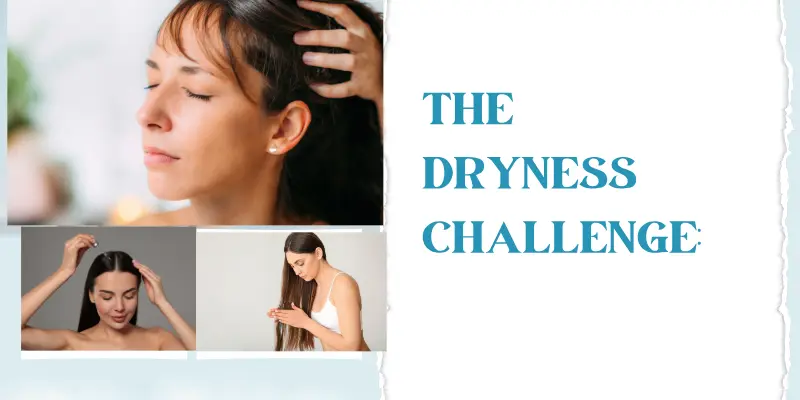
This leaves the hair devoid of moisture and can lead to breakage and lifelessness of the hair.
Solution
Moisture is the ultimate preventative measure against dryness. Apply moisturizing shampoos and conditioners, and schedule at least one deep conditioning session each week. After a leave-in conditioner, apply oils or creams to prevent further evaporation. In addition, heat-styling appliances should be avoided, and satin or silk scarves should be used at night to cover the hair.
2. Frizz
Challenge
While frizz can be problematic for anyone, it tends to be worse for those who have textured hair and live in humid areas. When hair dries out, it seeks moisture, making it puffy and full of flyaways.
Solution
The first step to reducing frizz is always to opt for a moisturizing routine. After washing, use a leave-in conditioner followed by a curl-defining cream to retain moisture. Gently dry your hair with a microfiber towel or a cotton t-shirt, and avoid traditional towels as they contribute to frizz due to friction. While blow-drying, a diffuser is recommended even on low heat to minimize the chances of coiling and touching the hair and to avoid frizz as well.
3. Shrinkage
Challenge
A problem that is specific to curly or kinky hair is that it looks much shorter when dry than when wet. However, shrinkage is an inherent characteristic of curly hair and does tend to give a lesser or unwanted volume to the hair.
Solution
To conceal shrinkage, use stretch techniques like twist-outs, braid-outs, or even bands. These help as they are also able to give the style a more extended curl. You can also use lightweight oils or creams that keep the hair moisturized, without the cloak of heaviness.
4. Tangles and Knots
Challenge
Because of the unique curl structure, textured hair is more susceptible to tangles and single-strand knots, especially for those with Coily or kinky hair.
Solution
It is best to use a conditioner or a rinse-out, or a leave-in product to assist in detangling textured hair. When combing through strands, start at the ends and work toward the roots, using a wide-toothed comb or one’s fingers. Regular trimming will fit in here as it will curb the formation of tangles and prevent the formation of split ends.
5. Breakage
Challenge
Textured hair has been known to be weaker in resiliency when compared to others, so it can be sensitive to over-manipulation, heat, or chemicals.
Solution
To avoid breakage, try avoiding excessive heat styling as well as chemical treatments. Use more protective styles that require less manipulation of your hair and protect the ends of your strands. Moreover, ensure that you are also on plenty of moisturizing products that are good for hair, while also avoiding tight styles that stress your hairline and scalp.
6. Scalp-related issues
Challenge
When looking after textured hair, the scalp can sometimes be forgotten, causing common scalp problems like dry, flaky, or itchy skin.
Solution
This problem can be handled by avoiding the use of harsh products that may leave the scalp neglected. Therefore, washing it clean with a gentle shampoo that is sulfate-free shampoo and regular is recommended. As for the working of the oils, it is stated that tea tree, peppermint, and jojoba oils are best for massaging the scalp as they hydrate the scalp and also help improve blood circulation.
Conclusion
This kind of broad approach can be used when arguing that textured hair is stunning in all its shapes and is an asset that can be tamed and styled in numerous different ways. All it takes is the right products and care so that curls, coils, and even waves will flourish. It really can be a wonderful process, ranging from simply trying to learn your specific hair type and using the best possible moisture-packed hair products to acceptance. Long hair problems, such as frizz and dryness, are common for people with textured hair. So, specific regimes for hair type should be declared as the golden rule. Just keep in mind that textured hair is different. It will have a new normal.
FAQ: Original Textured Hair Discussions
You don’t need crunchy gels or stiff sprays to get defined curls. Curl creams and mousses are great lightweight alternatives that enhance your curl pattern while keeping your hair soft and touchable. Apply them to damp hair, scrunch gently, and either air-dry or diffuse for bounce and definition. This way, your curls look natural and lively without feeling stiff.
Protective styles are essential for keeping textured hair healthy and reducing breakage. Braids, twists, buns, and updos help tuck away your ends, shielding them from friction and environmental stress. They also cut down on daily manipulation, which can weaken strands. Just make sure the style isn’t too tight, so you protect your scalp and edges too.
Frizz usually happens when your hair lacks moisture or when drying methods rough up the cuticle. To control it, apply a leave-in conditioner or curl cream while your hair is still damp. Dry with a microfiber towel or a cotton T-shirt instead of a regular towel, which can cause friction. Air-drying or diffusing on low heat also helps lock in smoothness.
Shrinkage is completely natural, but if you want to stretch your curls, there are safe styling options. Twist-outs, braid-outs, and banding are popular methods that elongate the curl pattern without heat damage. These techniques give your hair a fuller, longer appearance while still preserving your texture. Embracing shrinkage as a sign of healthy hair is also important.
Single-strand knots, or fairy knots, are common because curls tend to loop and tangle around themselves. Keeping your hair moisturized reduces friction and makes it less likely for knots to form. Regular detangling with a wide-tooth comb or your fingers also helps. Trimming your ends and wearing protective styles can further minimize those pesky knots.
Healthy hair starts with a healthy scalp. Cleanse your scalp regularly using a gentle, sulfate-free shampoo, and massage it to boost circulation. If you deal with dryness, flakes, or itchiness, oils like tea tree, peppermint, or jojoba can provide soothing relief. A balanced scalp environment encourages stronger, faster hair growth.
Textured hair doesn’t need frequent washing because it tends to be drier than other hair types. Washing every 7–10 days is usually ideal, keeping your scalp clean while retaining natural oils. Over-washing can strip away moisture and leave hair brittle. In between washes, co-washing or using a gentle cleansing conditioner can refresh your curls.
Yes, coconut oil can work wonders for some people, but it’s not for everyone. It penetrates the hair shaft and helps lock in moisture, but some find it leaves their hair stiff or dry. The best way is to test it on a small section and see how your hair reacts. If it works for you, use it sparingly to avoid buildup.
The LOC or LCO method works best for textured hair. Start with a water-based leave-in to hydrate, then layer an oil to seal in the moisture, and finish with a cream to lock everything in place. Adjust the order depending on what your hair likes best. This method helps curls stay soft, defined, and hydrated longer.
Yes, sometimes protein treatments are necessary for textured hair. If your hair feels mushy, overly soft, or breaks easily, it may be lacking protein. A protein treatment helps rebuild and strengthen the hair shaft, balancing elasticity and structure. However, too much protein can cause stiffness, so alternate with moisturizing treatments for the best results.

- Be Respectful
- Stay Relevant
- Stay Positive
- True Feedback
- Encourage Discussion
- Avoid Spamming
- No Fake News
- Don't Copy-Paste
- No Personal Attacks

- Be Respectful
- Stay Relevant
- Stay Positive
- True Feedback
- Encourage Discussion
- Avoid Spamming
- No Fake News
- Don't Copy-Paste
- No Personal Attacks
